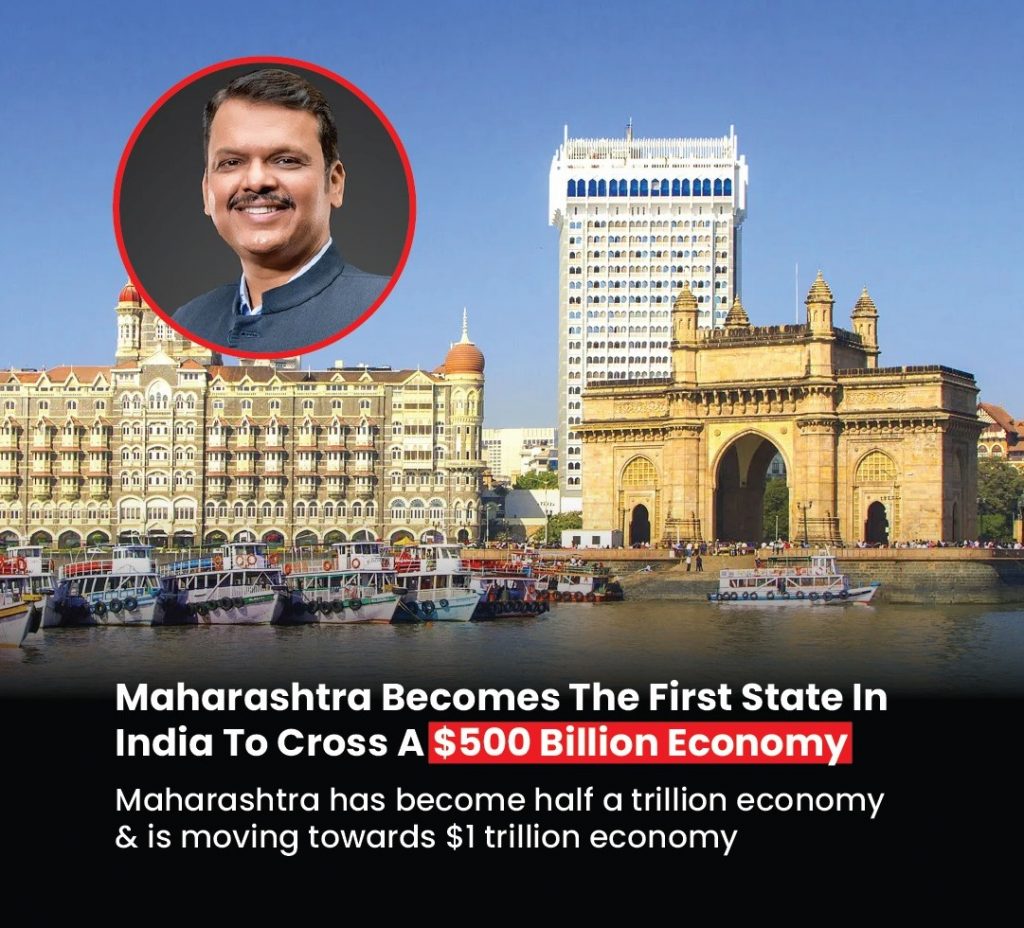Maharastra becomes the first state in India to cross $500 billion economy.
3 min read
This topic would delve into the potential challenges that Maharashtra might face in maintaining its economic growth trajectory, as well as the opportunities that lie ahead as it continues to expand its economy beyond the $500 billion milestone. Maharastra becomes first state India cross $500 billion economy these topics offer a platform to discuss the nuances of Maharashtra’s economic development and the broader implications for the state and the nation. Maharashtra, India’s economic powerhouse, has achieved a remarkable feat by crossing the $500 billion economy mark. This milestone cements Maharashtra’s position as the first state in India to reach this economic stature. The journey to this achievement is a testament to the state’s robust economic policies, diverse industrial base, and entrepreneurial spirit. Maharastra becomes first state India cross $500 billion economy the state’s economy is a complex tapestry woven with various sectors contributing to its GDP. Maharashtra’s industrial sector, particularly the Mumbai-Pune industrial belt, is the linchpin of its economic success. The state’s capital, Mumbai, known as the financial capital of India, hosts major banks, financial institutions, and the stock exchange, contributing significantly to the state’s economic growth. Agriculture also plays a crucial role in Maharashtra’s economy. Despite urbanization, the state has maintained agricultural productivity through innovative practices and technology adoption. The state’s agrarian economy benefits from a varied climate, allowing for a diverse range of crops. Maharashtra’s service sector, especially IT and ITES, has seen exponential growth. Cities like Pune and Nagpur have become hubs for IT companies, attracting talent from across the country. This sector’s growth has been fueled by the state’s investment in digital infrastructure and skilled workforce development. Tourism is another significant contributor to Maharashtra’s economy. The state’s rich cultural heritage, historical sites, and natural beauty attract tourists from all over the world. The government’s initiatives to promote tourism have resulted in improved infrastructure and increased international visibility. Infrastructure development has been pivotal in Maharashtra’s economic journey. The state has invested heavily in transportation, including roads, railways, and airports, facilitating trade and mobility. The Mumbai Metro project and the Mumbai Trans Harbour Link are examples of infrastructure projects boosting the state’s economy. Maharashtra’s economic policies have been conducive to attracting foreign direct investment (FDI). The state government’s ease of doing business reforms and incentives for investors have made Maharashtra an attractive destination for global companies. Education and human resource development have been central to Maharashtra’s economic strategy. The state’s emphasis on education has resulted in a skilled and knowledgeable workforce, driving innovation and productivity. Maharashtra’s universities and research institutions are at the forefront of technological advancements, contributing to the state’s economic growth. The state’s commitment to sustainable development is evident in its policies. Maharashtra has embraced renewable energy, with significant investments in solar and wind power. This not only contributes to the state’s energy security but also positions it as a leader in green energy. You can read more here. Maharashtra’s economic success is not without challenges. The state faces issues such as urban congestion, environmental concerns, and income disparity. Addressing these challenges is crucial for sustainable and inclusive growth. In conclusion, Maharashtra’s achievement of crossing the $500 billion economy mark is a momentous occasion. It reflects the state’s dynamic economic landscape, driven by a blend of traditional industries and modern sectors. Maharashtra’s success story serves as an inspiration for other states in India, showcasing the potential of economic policies focused on growth, innovation, and sustainability. The state’s journey to this economic milestone is a narrative of resilience, strategic planning, and the relentless pursuit of excellence.





